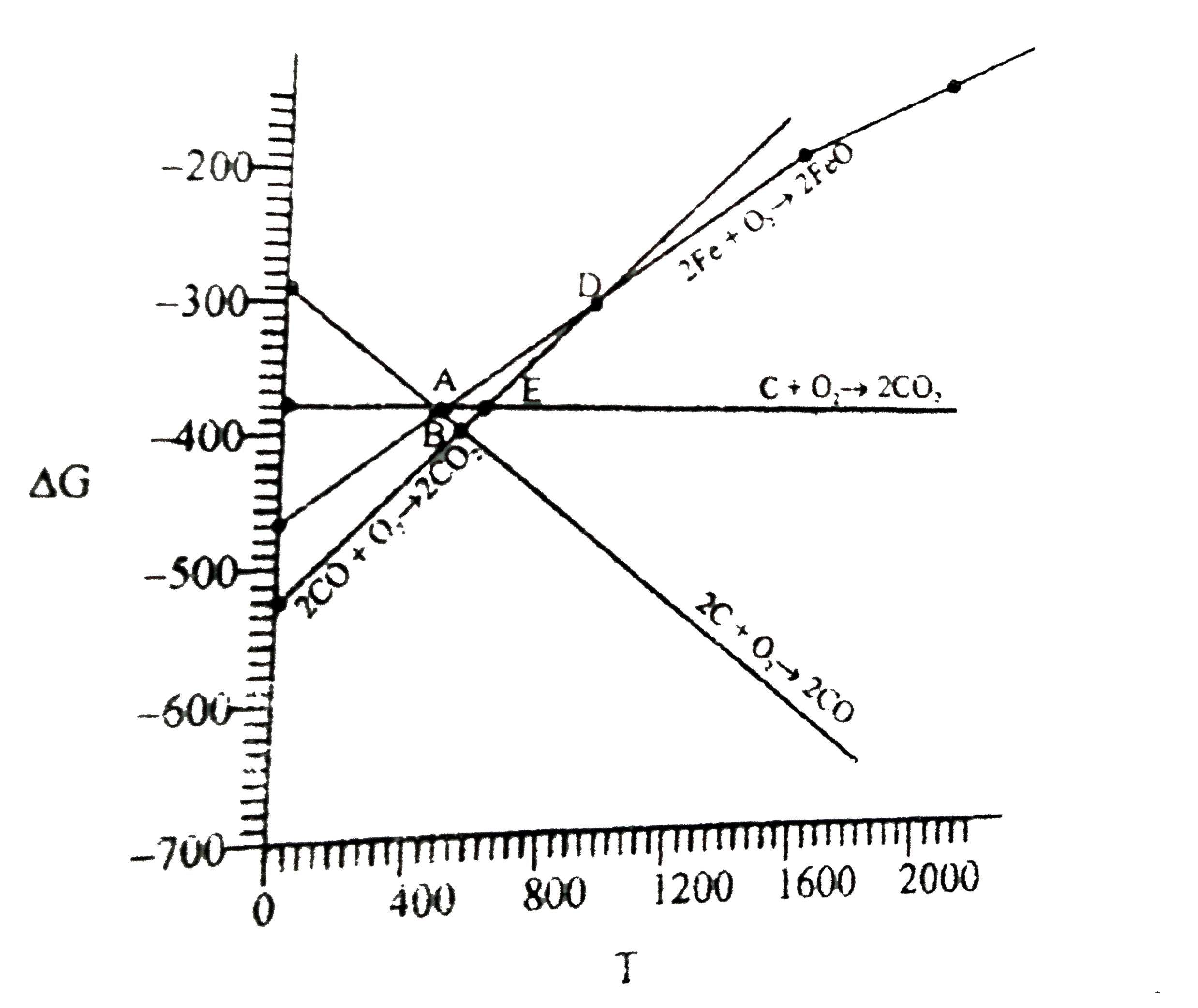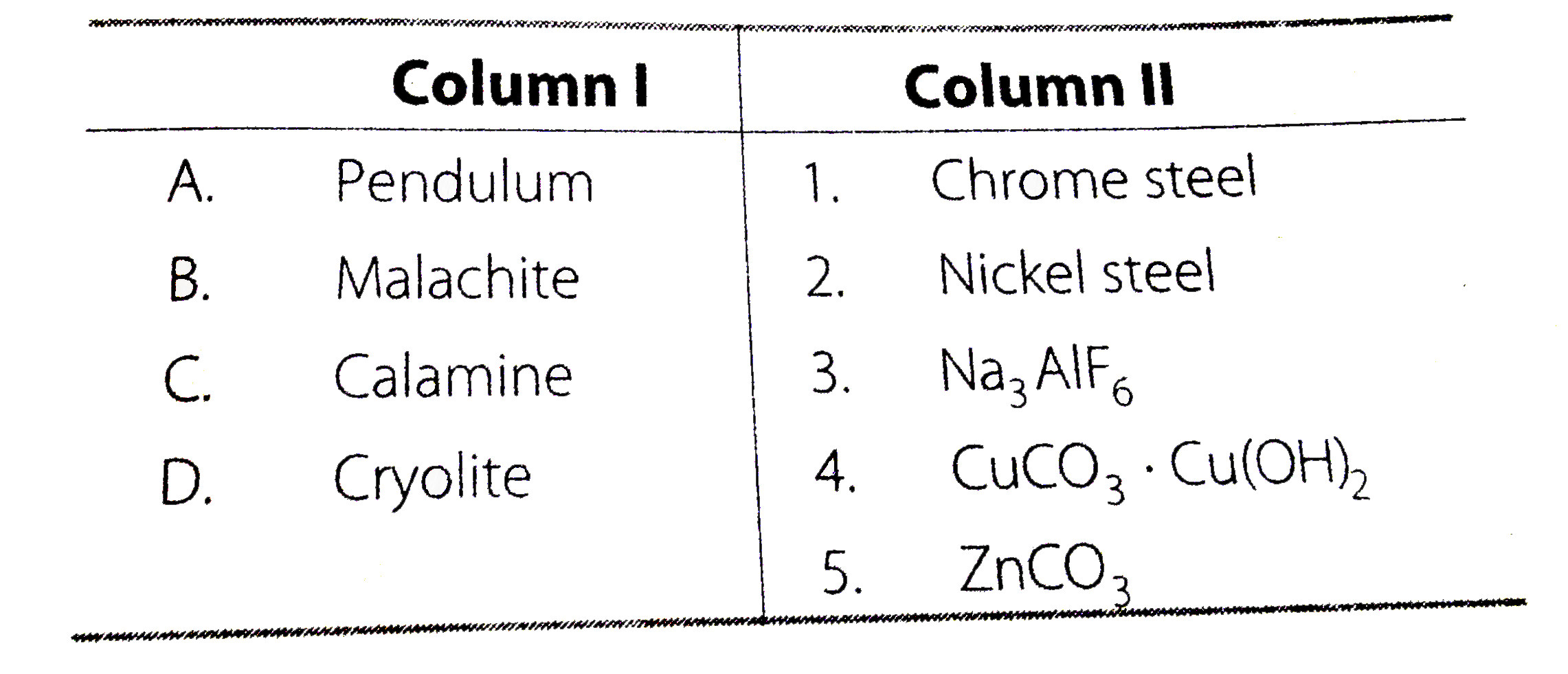Complete Solutions to General Principle And Processes Of Isolation Of Elements of chapter GENERAL PRINCIPLE AND PROCESSES OF ISOLATION OF ELEMENTS of Class 12 book with complete answers and questions
| Class 12 | CHEMISTRY |
| Chapter | GENERAL PRINCIPLE AND PROCESSES OF ISOLATION OF ELEMENTS |
| NCERT EXEMPLAR | General Principle And Processes Of Isolation Of Elements |
| Number Of Questions | 55 |
| Academic Year | 2023-24 |
In the extraction of chlorine by electrolysis of brine_________.
02:56View SolutionWhen copper ore is mixed with silica in a reverberatory furnace, copper matte is produced. The copper matte contains__________
01:40View SolutionWhich of the following reaction is an example of autoreduction?
01:34View SolutionA number of elements are available in earth's crust but most abundant elements are___________
01:48View SolutionZone refining is based on the principle that
01:58View SolutionIn the extraction of Cu from its sulphide ore, the metal is formed by reduction of `Cu_(2)O` with
01:36View SolutionBrine is electrolysed by using inert electrodes. The reaction at anode is_______
02:04View SolutionIn the metallurgy of aluminium,
02:35View SolutionElecyroltic refining is used to purify which of the following metals?
01:38View SolutionExtraction of gold and silver involves leaching the metal with `CN^(-)` ion. The metal is recovered by _______
02:25View SolutionChoose the correct option of temperature at which carbon reduced `FeO` to iron and produces `CO`
 02:02View Solution
02:02View SolutionBelow point 'A' `FeO` can __________
 02:28View Solution
02:28View SolutionFor the reduction of `FeO` at the temperature corresponding to point D, which of the following statements is correct?
 04:20View Solution
04:20View SolutionAt the temperature corresponding to which of the points in Fig. `FeO` will be reduced to Fe by coupling the reaction `2Fe rarr 2Fe +O_(2)` with all of the following reactions?
(a) `C + O_(2) rarr CO_(2)` (b) `2C +O_(2) rarr 2CO` and (c) `2CO +O_(2) rarr 2CO_(2)`03:55View SolutionWhich of the following options are correct?
03:33View SolutionIn the extraction of aluminium by Hall-Heroult process purified `Al_(2)O_(3)` is mixed with `CaF_(2)` to
02:17View SolutionWhich of the following statements is correct about the role of substances addedd in the froth floatation process?
03:11View SolutionIn the Froth Floatation process, zinc sulphide and lead sulphide can be separated by__________
03:10View SolutionCommon impurities present in bauxite are________
01:23View SolutionWhich of the following ores are concentarted by froth floatation?
01:02View SolutionWhich of the following reaction occur during calcination ?
02:32View SolutionFor the metallurgical process of which of the ores calcined ore can be reduced by carbon?
01:52View SolutionThe main reaction occuring in blast furnace during the extraction of iron form haematite is
02:00View SolutionIn which of the following method of purification metal is converted to its volatile compound which is decomposed to give pure metal?
02:47View SolutionWhich of the following statements are correct ?
02:59View SolutionIn the extraction of chlorine from brine_________
02:08View SolutionWhy is an external emf of more than `2.2V` required for the extraction of `CI_(2)` from brine?
02:17View SolutionAt temperature above `1073K` coke can be used to reduce `FeO` to `Fe`. How can you justify this reduction with Ellingham diagram?
02:32View SolutionWrought iron is the purest form of iron. Write a reation used for the preparation of wrought iron from cast iron. How can the impurities of sulphur, silicon and phosphorus be removed from cast iron?
03:08View SolutionHow is copper extracted from low grade copper ores?
02:24View SolutionWrite two basic requirements for refining of a metal by Mond process and by Van Arkel Method
03:29View SolutionAlthough carbon and hydrogen are better reducing agents but they are not used to reduce metallic oxides at high temperatures. Why?
01:33View SolutionHow do we separate two sulphide ores by Froth Floatation Method? Explain with an example.
02:14View SolutionThe purest form of iron is prepared by oxidising impurities from cast iron in a reverberatory furnace. Which iron ore is used to line the furnace? Explain by giving reaction.
04:05View SolutionThe mixture of compounds A and B is passed through a column of `Al_(2)O_(3)` by using alcohol as eluent. Compound A is eluted in preference to compound B. Which of the compounds A or B is more readily adsorbed on the column?
01:55View SolutionWhy is sulphide ore of copper heated in a furnace afer mixing with silica?
02:39View SolutionWhy are sulphide ores converted to oxide before reduction?
01:51View SolutionWhich method is used for refining `Zr` and `Ti`? Explain with equation.
02:20View SolutionWhat should be the considerations during the extraction of metals by electrochemical method?
01:27View SolutionWhat is the role of flux in metallurgical processes?
04:16View SolutionHow are metals used as semiconductor refined? What is the principle of the method used?
01:45View SolutionWrite down the reactions taking place in Bast furnace related to the metallurgy of iron in the temperature range `500-800K`
02:21View SolutionGive two requirements for vapour phase refining.
01:44View SolutionWrite the chemical reaction involved in the extraction of gold by cyanide process. Also give the role of zinc in the extraction.
02:29View SolutionMatch the items of Column I with item of Column II and assign the correct code.
 01:34View Solution
01:34View SolutionMatch the items of Column I with item of Column II and assign the correct code.
 02:24View Solution
02:24View SolutionMatch the items of Column I with item of Column II and assign the correct code.
 01:41View Solution
01:41View SolutionMatch the items of Column I with item of Column II and assign the correct code.
 01:51View Solution
01:51View SolutionMatch the items of Column I with item of Column II and assign the correct code.
 01:50View Solution
01:50View SolutionAssertion : Nickel can be purified by Mond process.
Reason : `Ni(CO)_(4)` is a volatile compound which deomposed at `460K` to give pure `Ni`.03:44View SolutionAssertion : Zirconium can be purificed by Van Arkel method.
Reason : `ZrI_(4)` is volatile and decomposed at `1800 K`.04:02View SolutionAssertion : Sulphide ores are concentrated by Froth Floatation method.
Reason : Cresols stabilise the froth in Froth Floatation method02:22View SolutionAssertion : Zone refining method is very useful for producing semiconductors.
Reason : Semiconductors are of high purity.01:59View SolutionAssertion : Hydrometallurgy involves dissolving the ore in a suitable reagent followed by precipitation by a more electropositive metal.
Reason : Copper is extracted by hydrometallurgy.02:59View SolutionExplain the following
(a) `CO_(2)` is a better reducing agent below 710 K whereas CO is a better reducing agent above 710 K .
(b) Generally sulphide ores are converted into oxides before reduction.
( c) Silica is added to the sulphide ore of copper in the reverberatory furnance.
(d) Carbon and hydrogen are not used as reducing agents at high temperature.
(e) Vapour phase refining method is used for the purification of Ti05:22View Solution
General Principle And Processes Of Isolation Of Elements questions and complete solutions for chapter GENERAL PRINCIPLE AND PROCESSES OF ISOLATION OF ELEMENTS of CHEMISTRY of Class 12
